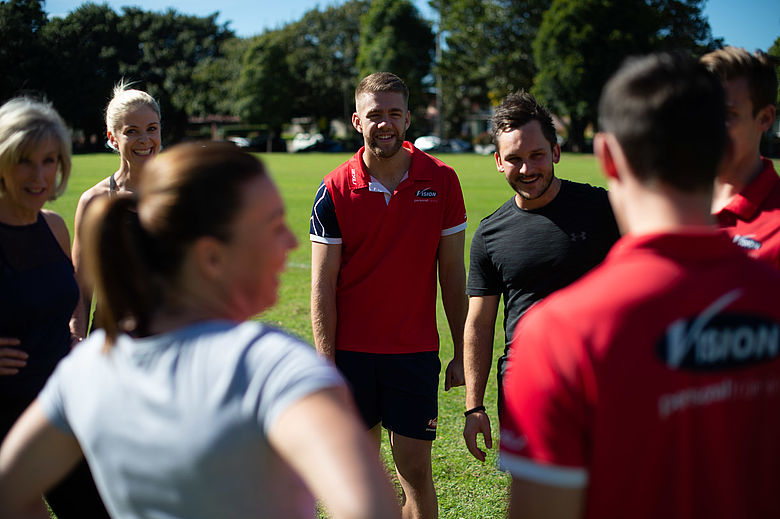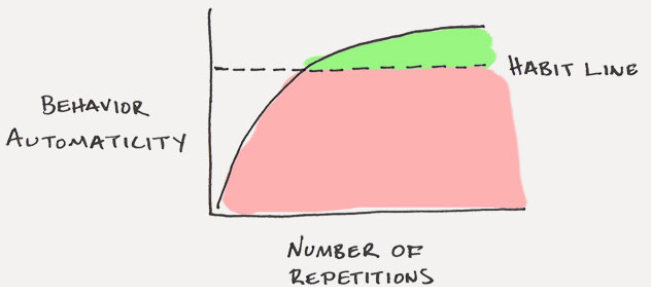I am not even going to pretend that any of these ideas in this short series are my own. What I am going to do is share some of the key topics that resonated with me after reading Atomic Habits by James Clear. If you are looking for some clear, concise information behind the formation of habits, the reason behind cravings, and ways to build and promote positive actions that can evolve into good habits, I thoroughly recommend you read Atomic Habits. If you’re not much of a reader and just want an overview, please read on.
Who do you want to be? Are you happy with how things are? Are you happy with your health? Are you happy with what you eat and drink each day? Do you get enough sleep each night? How does it make you feel? What changes do you need to make to be the person you want to be?
I exercise for a few reasons. One, it makes me feel good. Two, I enjoy it. Three, it’s good for me and four, it’s simply part of my routine now. I feel restless if I don’t do some sort of activity. My body notices when I’ve been sitting for too long.
I also have my goals. I am currently working towards the 100kg deadlift! However, the regular action of getting changed into my gym gear, grabbing my towel and bottle, and heading for my workout is now second nature to me and I enjoy the process. These are small wins that contribute to the final goal in some way. Even if it’s a heavy deadlift session or a simple walk, the process is so engrained in my identity that I can enjoy the journey well before I reach my goals and beyond. Finally, let’s not forget that the end goal is only a tiny fraction of the entire journey, and you never know what you might experience along the way. The possibilities are endless! Want to start? Let’s take that first step.
Casting votes for the person you want to be
What is your why? You want to lose weight? Why? You want to gain strength? Why? You want to read more? Why? You want to reduce your screen time? Why? Knowing your why will help you identify the reasons that make these changes so important to you. It will help you stay on track, even if there is a set-back.
Negative internal monologue can form part of your identity. “I’m not good at running”, “I’m always late”, “I can never get it right”, “I can’t lose the weight”. We all say and think these things and over time they can make it difficult to change our behaviour because we recognise those ‘traits’ as part of our identities, whether or not they’re true.
Every action is a ‘vote’ for the type of person you want to become. As the votes build up, a new identity starts to form. Just remember, a unanimous vote is not required to win an election. The majority is all that is needed. Sometimes, we may vote in favour of a bad habit and that is okay! It’s not the end of the world. Your habits are how you embody your identity. The more you repeat a behaviour, the more you reinforce the identity associated with the behaviour. Are your current choices based on what you want now or who you want to be? – “I want” versus “I am”.
Habit Formation
Habits are created through hundreds and thousands of repetitive actions. As soon as you get home from work, you kick off your shoes and sit down in front of the TV. As soon as you finish lunch you eat a chocolate biscuit. As soon as you finish dinner, you wash up the plate and cutlery. As soon as you get out of bed, you wash your face. Things that we may have been doing since a very young age and some will serve us in a positive way, while others may not.
We don’t choose our earliest habits, we imitate them. For example:
-
Eating a full, large plate of food because we grew up in a household where we had to finish everything on the plate otherwise, we wouldn’t get dessert.
-
The issue: not only were we potentially overeating a lot of the time, but we were rewarded with more food even when we didn’t feel like we could eat what was in front us in the first place.
-
We’re told we must finish what is in front of us because there are less fortunate people around the world who don’t have access to good, nutritious food.
-
The issue: as we get older, we experience feelings of guilt if we don’t finish all the food presented to us.
To create a new habit, the same number of repetitions is required to first establish the behaviour and then cement it as part of your routine. Frequency, not time, is what determines if an action will stick and eventually develop into a habit. Patience is key. Changing a habit, or starting a new habit, is hard and requires lots of practice.
Just be mindful that planning can sometimes become procrastination. We feel like we’re making progress without running the risk of failure. Many of us are simply ‘waiting for the right time’ to start something new. How many times have you said ‘I’ll start training on Monday’ or set a New Year’s resolution that hasn’t gone anywhere? Or worse, hasn’t even been started? What exactly are we waiting for? If we keep waiting for the ‘perfect time’, it will never come. Stop waiting and just ’do’. You must establish a habit before you can work on improving the habit.
Habit building is about doing something often enough until the behaviour is firmly embedded in your mind and you cross the habit line.
(Credit: https://jamesclear.com/new-habit)
In the beginning, an action requires a good deal of effort and concentration. As time goes on, the action gets easier but still requires some conscious effort. Once you pass the habit line, the action becomes more automatic than conscious, and a new habit is formed.
When you first start off, you simply need to master the habit of showing up. Doing something is better than doing nothing at all. Do you want to go for a walk but only have time to walk around the block? Then do that. Want to read more? Start by reading just one page at a time. The next day, walk a little further, and read two pages instead of one.
“When you fall in love with the process rather than the product, you don’t have to wait to give yourself permission to be happy.”
Click here to read Part 2.


